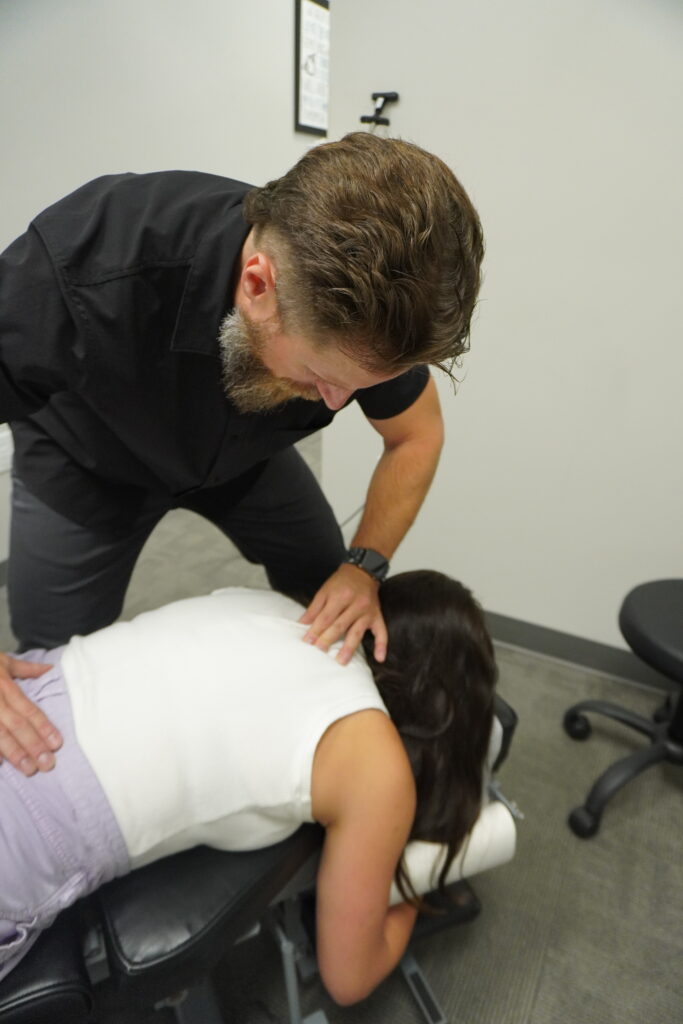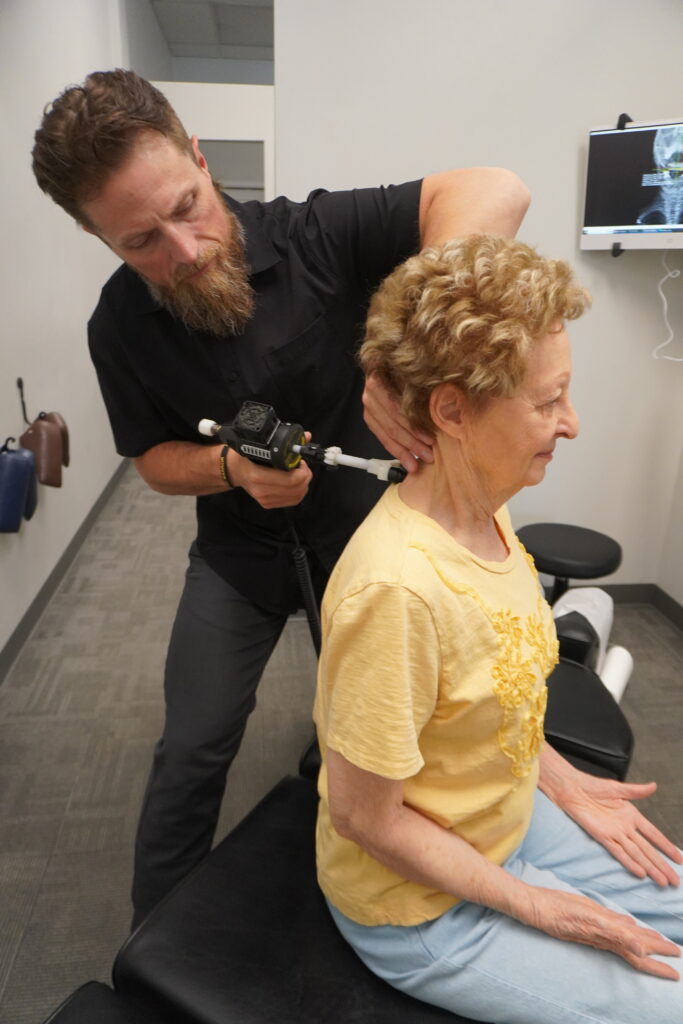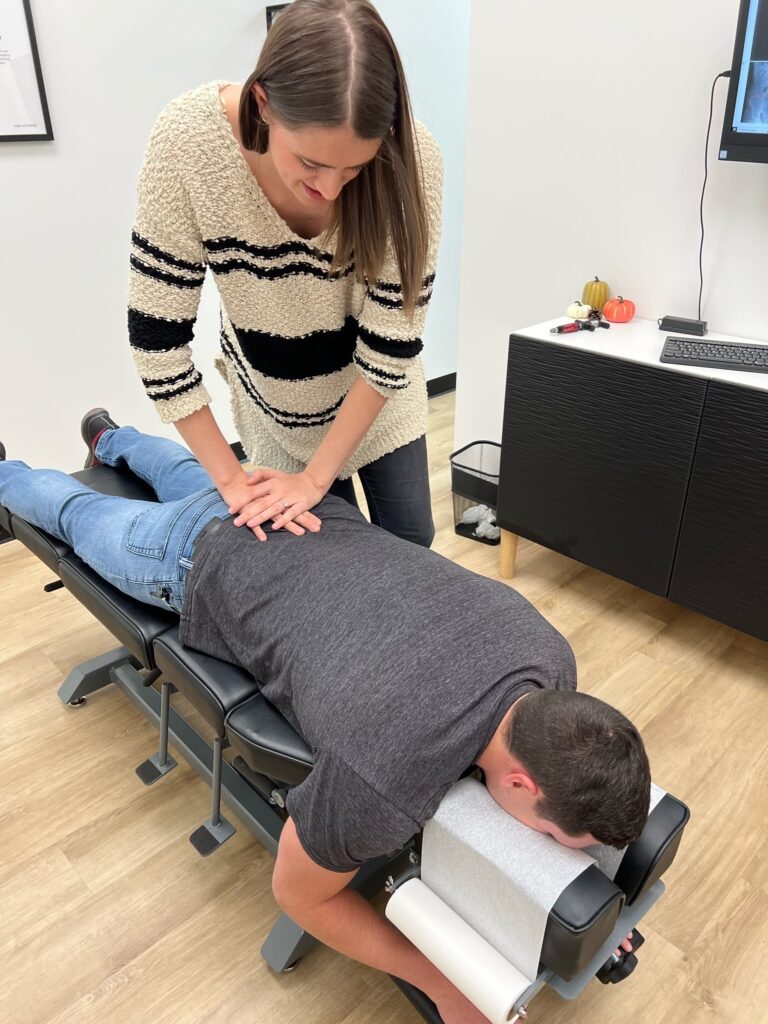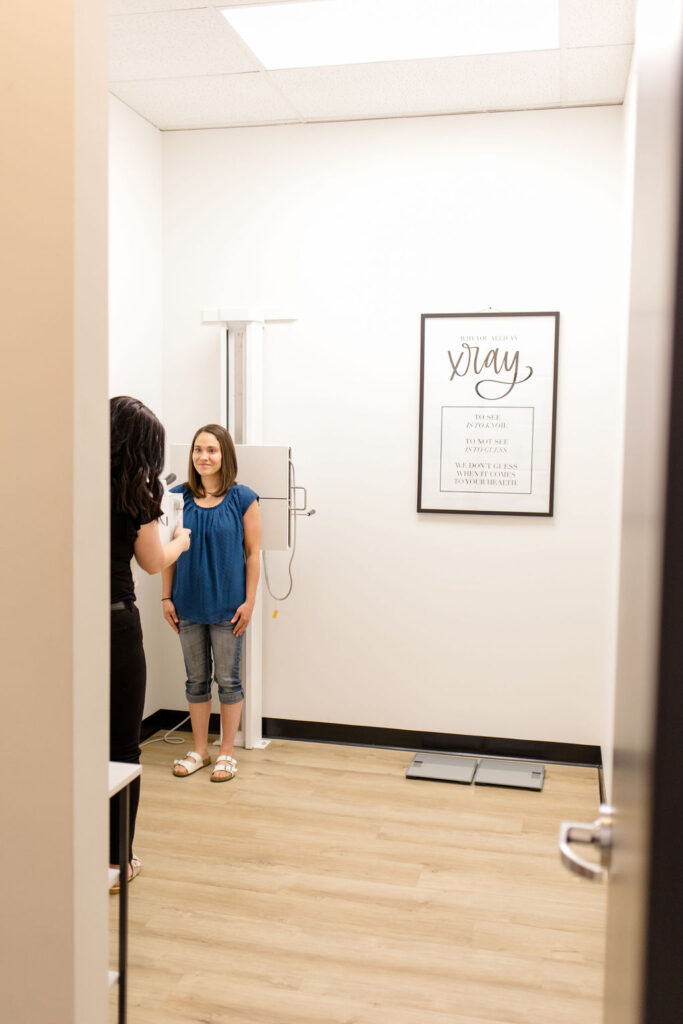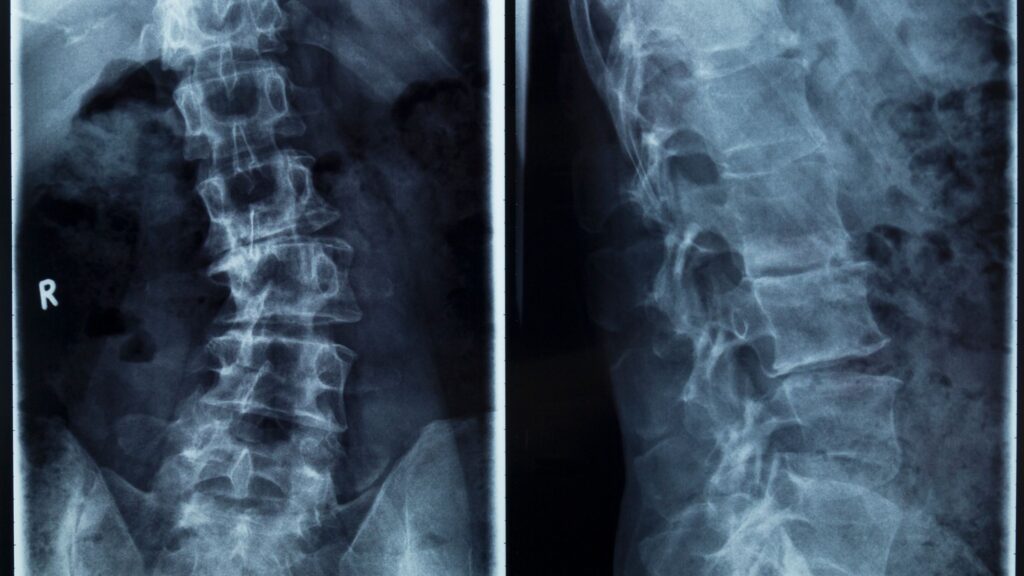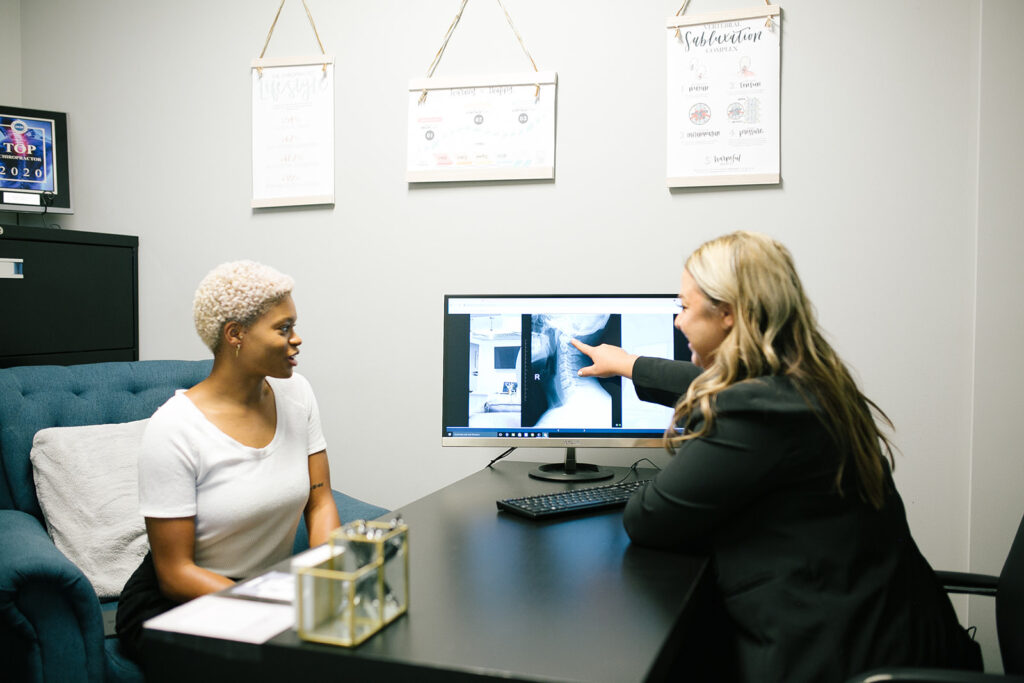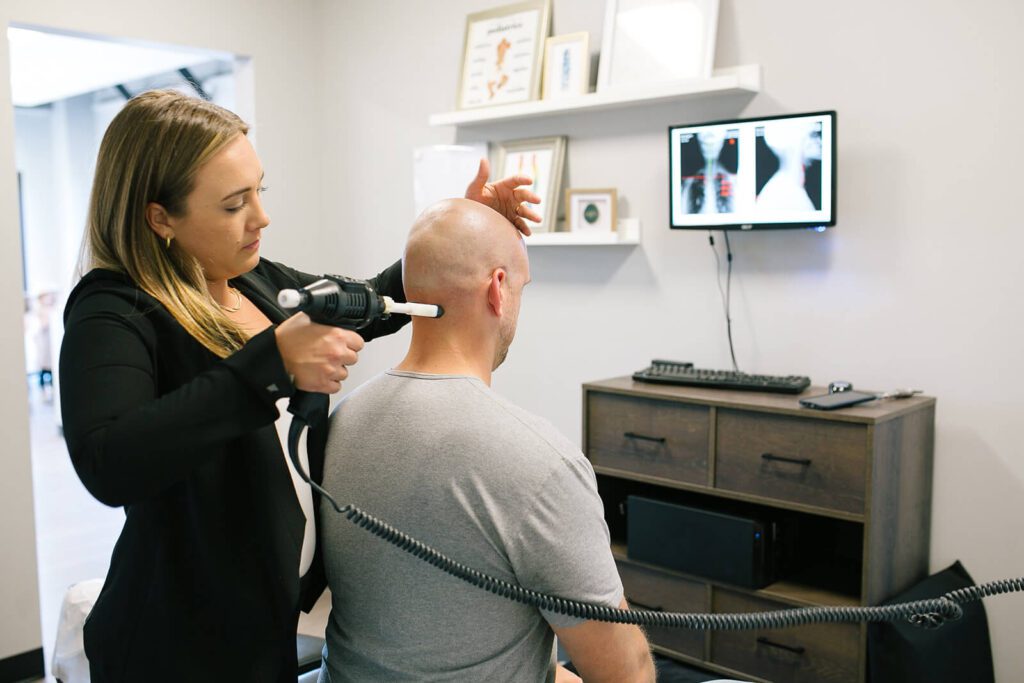Yes, a chiropractor can help with spinal stenosis. Chiropractors use non-surgical techniques to relieve pain and improve mobility. In this article, learn how chiropractic care addresses spinal stenosis and what treatments you can expect. Can a chiropractor help spinal stenosis? The answer is yes!
Key Takeaways
- Spinal stenosis, characterized by the narrowing of the spinal canal, primarily affects older adults and can lead to pain, numbness, and mobility issues.
- Chiropractic treatment offers non-surgical methods for managing spinal stenosis, including spinal adjustments, decompression techniques, and tailored exercise programs focused on pain relief and improved spinal function.
- Long-term management of spinal stenosis should encompass lifestyle modifications and ongoing chiropractic care to maintain spinal health and prevent further deterioration.
Understanding Spinal Stenosis
Spinal stenosis involves the constriction of the spinal canal, which can exert increased pressure on both the spinal cord and nerves. This condition predominantly impacts those aged 50 and above, with more severe symptoms often manifesting in people over 60 years old. Compression of the spinal cord and its nerves due to this narrowing may lead to discomfort, loss of feeling, and muscle weakness.

Aging processes along with degenerative disc disease are fundamental contributors to spinal stenosis. These conditions cause a decline in moisture levels within the intervertebral discs alongside bone and ligament thickening—all factors that diminish space inside the spine’s channel. The natural deterioration from daily usage also plays a role in developing this disorder—highlighting why individuals must comprehend these underlying reasons when seeking ways to manage or treat their condition effectively.
Dealing with everyday activities can become burdensome as a result of spina lstenosis since it affects equilibrium, sensation awareness, and muscular control through stress on nerve roots leading out from compressed areas. Problems relating specifically to alleviating pain frequently arise because of such neural tension. Addressing early signs properly could be beneficial by hindering Exacerbation notably concerning one’s quality-of-life maintenance amid coping mechanisms against symptomatic progression associated with said medical issue.
Common Symptoms of Spinal Stenosis

The presentation of spinal stenosis symptoms depends on the specific area affected by the condition. In cases where it involves the cervical spine, individuals often report experiencing neck discomfort. There can be a loss of sensation, tingling sensations, or muscular weakness in their arms and hands due to the narrowing of the spinal canal in this region which results in putting pressure on both nerves leading into upper body areas.
Symptoms associated with lumbar spinal stenosis include discomfort at lower back locations as well as pain that may radiate down one or both legs combined with leg or foot numbness and muscle weakness. The challenges presented by this form are significant because they can interfere substantially with an individual’s ability to maintain mobility and carry out routine activities. Sufferers frequently notice an escalation in painful sensations when engaged in upright positions such as standing or walking. Consequently, imposing considerable restrictions on their daily movements.
Leg debility along with diminished sensitivity characterize common indications for those suffering from spinal stenosis affecting lower back regions, issues that typically become more pronounced while upright but might see some relief through actions like bending forward or assuming seated postures. Promptly recognizing these signs is crucial for timely intervention and averting additional serious outcomes related to continued pressure on nerves within the restricted spaces around them.
Causes of Spinal Stenosis
Over time, various factors can affect the spine and lead to spinal stenosis. The most prevalent cause is degenerative changes associated with aging, which include drying out of the spinal discs, thickening of bones and ligaments, and a diminished space in the spinal canal. As these age-related changes occur naturally within our bodies, they often result in an onset of spinal stenosis—particularly affecting older adults.
In some cases, individuals are born with a congenital condition that presents them with a narrower than usual spinal canal from birth. Traumatic events causing injuries like fractures or dislocations to the spine may narrow the canal Increasing one’s risk for developing this condition.
Though it happens infrequently, tumors growing within the confines of the spinal canal have been known to induce stenosis. Over time, as ligaments thicken—and potentially encroach on space already limited by other conditions—the likelihood increases for someone experiencing restriction within their spinal canal thus contributing to this ailment.
Diagnosing Spinal Stenosis

Initiating the diagnosis of spinal stenosis, chiropractors meticulously gather a patient’s symptom history. This is a pivotal phase where they evaluate symptoms and conduct an exhaustive physical exam to pinpoint indications of spinal stenosis. They search for atypical reflexes, sensation loss, and other signs indicative of this condition during their assessment.
Should there be indications that point toward spinal stenosis, chiropractors typically proceed with imaging tests to substantiate their suspicion. To obtain clear visuals of the spine’s condition, they may resort to X-rays or employ MRI or CT scans which can expose any constriction within the spinal canal. These diagnostic tools are integral in confirming spinal stenosis and gauging its extent.
Any treatment regimen for spinal stenosis necessitates an accurate diagnosis first and foremost. Chiropractors combine information from the patient’s documented history with findings from both physical examinations and imaging studies to craft a personalized treatment strategy aimed squarely at each patient’s particular issues—this holistic methodology ensures tackling not just symptoms but also their underlying causes for optimal therapeutic outcomes.
Chiropractic Treatment for Spinal Stenosis
Chiropractic treatment is a holistic, non-invasive option for those suffering from spinal stenosis. Employing methods like spinal adjustments and decompression, along with exercise routines, chiropractors work to lessen nerve compression and foster recuperation while improving the overall condition of the spine.
Aiming to alleviate discomfort and improve patients’ daily living experience without surgical intervention, chiropractic care focuses on identifying and tackling the underlying issues causing symptoms. Through stimulating the body’s inherent regenerative capabilities, this form of care can successfully control spinal stenosis and inhibit additional health concerns from developing.
Spinal Adjustments and Manipulations

Chiropractic care for spinal stenosis revolves around the application of spinal adjustments and manipulations. By carefully realigning the spine, these gentle interventions aim to alleviate pressure on nerves and correct imbalances that may lead to a reduced width in the spinal canal, which often results in nerve compression.
The act of performing such chiropractic treatments fosters both healing and pain relief by enhancing mobility, diminishing inflammation, and reinstating optimal functioning within the spine.
Employed as a non-surgical method to contend with spinal stenosis issues, these chiropractic techniques are recognized for their safety and effectiveness in providing considerable comfort to those afflicted.
Decompression Techniques

Chiropractors employ spinal decompression as a non-invasive approach to alleviate tension on the nerves and spinal cord. Through careful extension of the spine, this technique generates a vacuum effect within the discs that can draw back protruding disc material and support recovery processes. Decompression strategies are especially beneficial for individuals whose herniated discs play a role in their spinal stenosis condition.
Flexion-distraction is one targeted chiropractic method aimed at managing spinal stenosis by promoting decompression while enhancing flexibility in the spine. By diminishing stress on spinal components, these methods have shown considerable effectiveness in lessening symptoms related to patient’s conditions and bolstering overall health of the spine.
Exercise and Rehabilitation Programs
Chiropractic treatment for spinal stenosis typically involves a combination of exercises and rehabilitation programs that focus on building up the spine’s support through muscle strengthening. The objective is to promote better blood circulation, increase range of motion, and alleviate rigidity—key factors in preserving the health of the spine.
By participating in gentle activities such as walking, using a stationary bicycle, or performing aquatic exercises, individuals can help maintain their spinal well-being and curb additional progression of spinal stenosis. Chiropractors tailor these rehabilitation plans to meet individual patient requirements to provide precise and efficient treatment for those with this condition.
Benefits of Chiropractic Care for Spinal Stenosis Patients

Chiropractic adjustments, known for offering instant pain relief by rectifying misalignments and diminishing inflammation, often lead to a significant improvement in the condition’s symptoms. Within mere weeks of initiating this form of care, most individuals report considerable relief.
Chiropractic therapy furthers the body’s innate ability to heal itself through holistic recovery methods. By integrating specific stretches and therapies customized for individual needs, it proficiently mitigates spinal stenosis symptoms while enhancing overall well-being.
For those undergoing chiropractic treatment to treat spinal stenosis, maintaining a normal lifestyle without surgical intervention becomes entirely feasible. This mode of care not only improves spine alignment but also eases nerve pressure and heightens flexibility – all culminating in effortless daily life activities for patients. As a non-surgical alternative that eschews medication use risks associated with operations, this is an efficacious route toward managing spinal stenosis indications safely.
Managing Spinal Stenosis Long-Term
To manage spinal stenosis over an extended period, integrating lifestyle adjustments with chiropractic care is essential. Adopting a proper posture while seated, upright or in motion can diminish the strain on the spine. Opting for a mattress that offers adequate support will help to maintain correct spinal alignment as you rest, lessening pain and fostering the well-being of your spine.
Incorporating other key lifestyle adaptations such as employing safe techniques when lifting heavy objects, steering clear of bending at the waist and sustaining an optimal body weight are instrumental in diminishing stress on your spine. Engaging regularly in physical activities is vital to hinder muscle degradation around the spine and promote increased flexibility.
Chiropractors might suggest tailored exercises aimed at bolstering mobility and enhancing posture, which plays a significant role in effective long-term management strategies for spinal stenosis.
When to Consider Surgery
Surgery should be considered a last resort for spinal stenosis patients. It may be recommended in severe cases where non-surgical treatments fail to alleviate symptoms such as weakness or numbness. Common surgical procedures for spinal stenosis include laminectomy, spinal fusion, and decompression surgeries, which aim to relieve pressure on the spinal cord and nerves.
If surgery is recommended as the first treatment option, it is advisable to seek a second opinion to explore all possible alternatives.
Summary
Spinal stenosis is a condition that can significantly impact daily life, but understanding its symptoms, causes, and treatment options can empower patients to seek effective care. Chiropractic care offers a non-surgical, holistic approach to managing spinal stenosis, providing pain relief and improving mobility through spinal adjustments, decompression techniques, and exercise programs.
With the right treatment plan and lifestyle modifications, spinal stenosis patients can manage their symptoms and maintain a good quality of life. Chiropractic care promotes the body’s natural healing processes, offering a safe and effective way to navigate the challenges of spinal stenosis. Consider exploring chiropractic care as a viable option for managing spinal stenosis and improving your overall well-being.
Frequently Asked Questions
What is spinal stenosis?
Spinal stenosis is the narrowing of the spinal canal that exerts pressure on the spinal cord and nerves, often resulting in pain, numbness, and muscle weakness.
It is important to seek medical advice if experiencing these symptoms.
How is spinal stenosis diagnosed?
Spinal stenosis is diagnosed through a comprehensive evaluation of the patient’s symptoms and physical examination, along with imaging tests such as X-rays, MRI, or CT scans to identify the narrowing of the spinal canal.
What are the benefits of chiropractic care for spinal stenosis?
Chiropractic care offers significant benefits for spinal stenosis, including immediate pain relief, enhanced mobility, and the promotion of the body’s natural healing processes.
This approach presents a non-surgical and drug-free alternative for effective management of symptoms.
What lifestyle changes can help manage spinal stenosis long-term?
To effectively manage spinal stenosis long-term, it is essential to maintain good posture, utilize a supportive mattress, practice safe lifting techniques, achieve a healthy weight, and engage in regular physical activity.
These lifestyle changes can alleviate spinal pressure and improve overall symptoms.
When should surgery be considered for spinal stenosis?
Only when non-surgical methods have failed to alleviate the symptoms of spinal stenosis, and if intense manifestations such as numbness or weakness continue should surgery be contemplated.
Before deciding on surgical intervention for spinal stenosis, it is wise to seek a second opinion.








